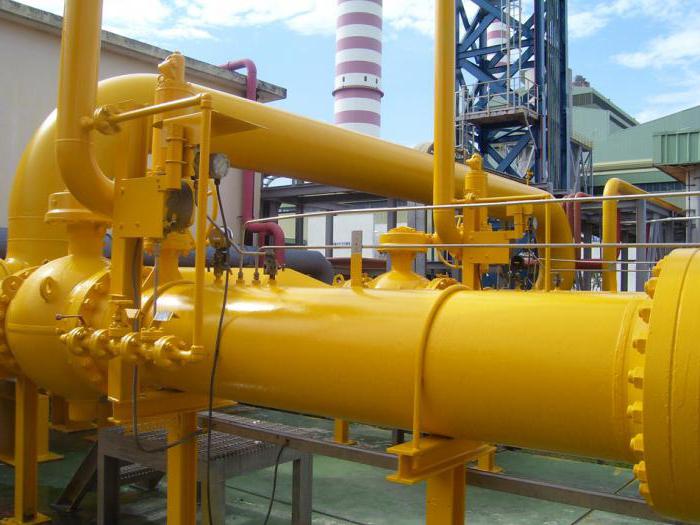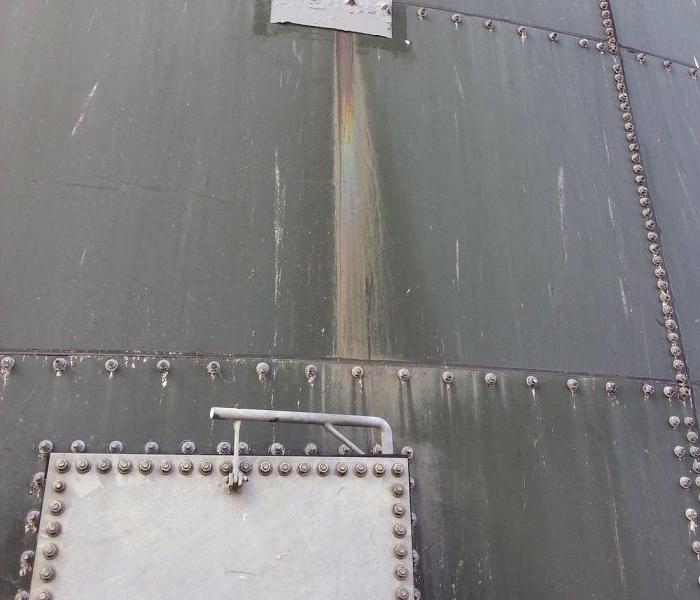Metal is one of the most popular materials used in construction and industry. Despite the fact that in some areas it is successfully replaced by a lightweight and more practical glass composite, the relevance of traditional designs remains at a fairly high level. Contribute to this and the use of additional measures of material processing, eliminating the negative factors of operation. Among such actions, the anti-corrosion protection of metal structures stands out thanks to which technologists exclude rust damage. As a result, the service life of the structures increases, during which the optimal technical and physical characteristics of the object are preserved.

General information on corrosion protection of metal
Protection of the metal surface from corrosion provides for the external processing of the material by special means that form a layer that prevents the negative processes of structural destruction. As a basis for the processing components can be considered paints and varnishes, the same metals and alloys. It is important to note that the corrosion protection of metal structures does not imply universality. Depending on the operating conditions of the object, the characteristics of a particular brand of metal used and the design of the loads imposed on it, a specific processing tool is selected. The approaches to providing surface coverage differ, which is explained by the diversity of the spectrum of threats against which the metal is protected. The function of a corrosion-resistant coating rarely comes down to merely creating a barrier to rust - the applied layer, as a rule, protects the structure from biological and mechanical influences.
Corrosion Protection Project

Assessment of the characteristics of a particular metal, as well as the conditions for its use, are carried out by specialists developing a protection project. For each area of application of structures, their own standards are provided, which are described by GOST. Corrosion protection of metal structures used in regions with a design air temperature of up to - 40 ° C, for example, focuses on the requirements of GOST 9.401. In this case, the coating material should be selected so that its features meet the requirements for frost resistance. Of course, in addition to temperature effects, other contacts of the metal structure with aggressive media are also calculated. If external influences suggest a non-aggressive nature, then the project may recommend the use of protective and decorative coatings.
Varieties of protective equipment

There are different approaches to the separation of corrosion protection agents. In particular, the classification by purpose of the target material is widespread. There are coatings that are used in the processing of industrial structures, marine vessels, pipelines, reservoirs and objects operated in the open air. As can be seen, in each case, its own characteristics of the interaction of the material with the environment are assumed. Adjusted for the nature of the operation, the corrosion protection of metal structures is selected. Types of coatings for pipelines, for example, are basically represented by paints and varnishes, and metallized spraying is more often used to protect ships. However, the metal structures responsible from the point of view of operation are rarely processed with one tool.Most often, a set of measures is applied, including both metallized spraying technologies and paint and varnish compositions.
Coating Processing Methods
The most common and traditional methods of anticorrosion protection include paint coatings. This technique is suitable for domestic use, if you need to refine and at the same time protect the metal fence, stairs or roofing from corrugated board from destruction. More efficient methods are already associated with industrial processing. This category includes anticorrosive protection of metal structures by galvanizing, heat treatment, alloying, faolithing, etc. However, the more complex and efficient the technique, the more expensive it is. The use of modern technological methods is not always justified economically, even when it comes to the industrial use of structures. Now it is worthwhile to examine in more detail the specific methods of anticorrosion treatment.
Paintwork

The basis for the development of specialized compositions that can prevent corrosion processes are often traditional paint and varnish mixtures. By introducing special solvents, plasticizers and pigments into the composition, optimum coating qualities are achieved. For example, enamel for anticorrosive protection of metal structures must have enhanced adhesion properties and at the same time form a layer that is reliable from the point of view of mechanical safety. Metal structures are usually used in harsh conditions, so physical resistance is one of the main directions for improving protective equipment. As for the processing technology, it is implemented in the classical way using a painting tool.
Cold galvanizing

The second most popular and highly effective method of protecting surfaces from corrosion. In the process of implementing this technology, the object is immersed in the melt, which in the future becomes the very barrier to the threat of rust. It should be noted that according to this technique, steel structures are most often processed, as well as connecting elements in the form of bolts and nuts. Often, additional processing operations are used, due to which the anti-corrosion protection of metal structures is strengthened. SNiP under the number 2.01-19-2004, which describes the methods of protecting building structures, indicates the possibility of using chromate and cadmium plating technologies as an alternative or addition. After that, the final paintwork is applied.
Aliting
Another method of metallization of structures that increases the resistance of the surface of the material to corrosion processes. As the active substance, powder mixtures based on ferroaluminium are used. If the previous method involves coating in the form of zinc, then in this case, aluminum spraying is formed. The surface of the object is coated with a metallized powder, after which an insulating coating is performed. Next, the element is prepared for diffusion annealing and is treated with a special aluminum paint on the same basis. Anticorrosion work is continuing to protect metal structures by immersing the structure in an aluminum melt with exposure, the parameters of which vary depending on the requirements for the final result. As practice shows, aliating gives metal surfaces the highest wear resistance characteristics.

Faolithing
This technology is a cross between a thorough treatment with metallized mixtures and surface application of a paint coat. The protective barrier in this case is formed by a mixture based on acid-resistant thermosetting plastic.The result is an anti-corrosion and heat-protective coating, which also counteracts the effects of chemically aggressive salts. The advantages that this corrosion protection of metal structures possesses include the possibility of use in high temperature conditions. However, in order to create a high-quality coating, a bakelite varnish base should be applied before direct processing.
Conclusion

Corrosion control agents are regularly improved and become more accessible not only for large enterprises, but also for ordinary users. The advent of new processing techniques also simplifies the coating process itself. At the same time, the design of anticorrosive protection of metal structures, which are used as part of communication infrastructure, industrial equipment and construction, plays an important role. The fact is that the materials that form the protective barrier themselves often act as active chemicals. Therefore, the responsibility of technologists who select the optimal means for metal processing, taking into account the peculiarities of their operation, is growing.
